"Look around here," says Ascanio Rodorigo with a laconic wave of his right hand at the glorious array of priceless motorcycles inside the Barber Vintage Motorsports Museum. "Any of these bikes made in the past 50 years have all been built the same way, with the same design and the same faults. It's our objective to try to persuade people to take a fresh look at two-wheeled chassis design. Questa e la mia sfida--this is my challenge."
Rodorigo, 43, began working for Massimo Tamburini at Bimota back in 1983-'84, before Cagiva boss Claudio Castiglioni lured away the "ta" in the company name to create such works of art as the iconically beautiful Ducati 916 and MV Agusta F4. But if his former boss is the Michelangelo of motorcycles, Rodorigo is the Picasso, as one look at his latest example of deconstructed cubist two-wheeled sculpture, the Vyrus 985 C3 4V, will confirm. Like the Richard Rogers-designed Pompidou Art Center in Paris, which displays its pipes, drains, conduits and heating ducts on the exterior of its walls for all to see, the surreal Vyrus wears its technology on the outside. As the 21st-century evoluzione version of the avant-garde Tesi 1D streetbike that Bimota built from 1991-'93, the Vyrus is a technological tour de force that is even more minimalist and aesthetically appealing than the slab-sided Tesi.
Gaze closely at the Vyrus and every 10 seconds yields another trick part or artistic feature--the gold-anodized track rods operating the car-type hub-center steering, or the skeletal CNC-machined aluminum frame spars, the stress paths of which were carefully plotted by finite element analysis, then the metal around them removed to save crucial ounces. Or the heavily revised steering linkage with the bell crank positioned on the front of the right frame spar, and the gently curved alloy drag link operating the rod that activates it, helping to eliminate some of the copious change in direction the original Tesi design incorporated, and restoring some of the filtered-out road feel. Or ... you get the picture. This is an exquisitely conceived, finely detailed and brilliantly executed motorcycle, a genuine work of modern art.
Taking to the Barber racetrack aboard the Vyrus was, for me, a two-hour trip down memory lane. What memories? Why travel all the way from England to Birmingham, Alabama, to ride a motorcycle hand-crafted in Rimini, Italy? Because the museum holds the original works Tesi 1D Superbike I raced for the Bimota factory in '91 and '92. "My" bike may now be decorated in the colors of Cristiano Migliorati, who raced it for a season in the Italian National Superbike Championship after I was through with it. But the chance to compare and contrast two such radical examples of alternative thought was too good to miss--especially as this particular Vyrus was destined to find a home in the U.S.
Hopping aboard the Tesi brought the memories flooding back, and underlined just how much smaller and more purposeful the Vyrus is. Its riding position is comfortable and comparatively normal, without your hands being too close together as on some other hub-center bikes due to there being no fork or triple-clamp assembly. The absence of any bodywork other than the intricately designed headlamp fairing adds to the sense of minimalism, but not at the expense of adequate wind protection at the 140 mph achieved down Barber's short straights.
Everything about the Vyrus seems refined, even delicate, and at first I struggled to reprogram my senses. But after a handful of laps gradually picking up speed, it suddenly clicked--and I remembered the mindset you must adopt to get the best out of a hub-center motorcycle: Hold the bars lightly and stay off the brakes until what seems suicidally late. The separation of steering from suspension is the biggest asset of such a front end. There's essentially no dive, and the suspension eats up bumps even when you're leaned over on the brakes. This bike is so confidence-inspiring and well balanced there seems no limit to how hard you can push it in corners. Well, there is one: Such treatment wears out the stock Pirelli Dragon Supercorsas very quickly. After around 50 laps, the front tire was well worn and the rear not much better.
Stability and ride quality are surprisingly good for a sportbike. The springless Double System air shocks are well set up in their standard settings, and are for sure more compliant than the stiffly sprung hlins we had to run to stop my Tesi racebike from weaving at speed. The Vyrus is easily flicked side to side, whereas the Tesi was hard work at speed. The radical steering geometry, with an 18-degree effective head angle and 3.8 inches of trail (adjustable 6 degrees upward from there, and from 3.1 to 4.1 in. of trail), allowed it to change direction faster than most bikes of comparable size. Yet that steep head angle hasn't resulted in significant instability, beyond one brief flick of the front wheel when I hit the only real bump on the otherwise billiard-table-smooth Barber surface accelerating out of the left horseshoe leading onto the back straight.
OK, so how did Rodorigo and company succeed in reinventing the Tesi? "In fact, we started again with a clean sheet of paper," he replies, "and decided we must completely forget all our experience of standard motorcycles, and think only of the suggestions offered by Bimota in arriving at the best solution. We made a bike that is a very stiff structure, where nothing moves except the suspension and the tires. And we produced a steering linkage with fewer bearings, so as to give it more sensitivity. You must feel the front tire as if the front axle were in your hands."
They also changed the center of gravity, raising the engine 40mm (1.6 in.) higher than on a 999R and 50mm (2.0 in.) higher than on the original Tesi. Weight distribution was also an important factor. At rest, the Vyrus has a 53 percent/47 percent forward weight bias, but with a 150-pound rider aboard it's 50/50--perfectly balanced.
"All this influences handling and makes the bike steer much faster, especially with the short wheelbase," Rodorigo continues. "It's like a 250cc GP bike in terms of geometry, but it's also completely stable in a straight line. Even if you try to make it shake by moving the handlebars, you can't. And we have no steering damper fitted; that's a Band-Aid for a wrong design!"
The only real downside to my reacquaintance with the Tesi concept in Vyrus guise was the bike literally hadn't run before being shipped to the U.S. As a result, the 999R motor wasn't dialed-in, and needed a series of stops to remap and retest before we got it running somewhere close to OK. Rodorigo and his crew normally do this before delivering a bike--the Misano racetrack is just a stone's throw from their shop--but getting the bike crated for its overseas voyage prevented them from doing so this time. The problem is Ducati won't authorize Magneti Marelli to release the access codes for the stock 999R EFI, which would enable Vyrus to remap the engine-management system for the much larger airbox and asymmetric exhaust system. Hence the need to fit an all-new ECU, the work of a small electronic specialist in northern Italy called Microtec, which seems to have done a good job.
Once we got it dialed I could ride the meaty torque curve of the short-stroke desmo V-twin and use its appetite for revs to hold a gear, shifting just six times per lap. Nice. With a claimed dry weight of 345 pounds and a reputed 150 rear-wheel horsepower at 10,500 rpm, the Vyrus is pretty invigorating to ride, with zestful acceleration and no real vibration from the engine even at five-figure revs, in spite of its application as a totally integrated chassis component.
For many proponents of two-wheeled alternative thought, the issue of finding a better way to hang a bike's steering wheel has been a matter of debate ever since BMW gave us the first telescopic fork almost 70 years ago. Apart from the brave-but-ultimately unsuccessful 1993-'94 Yamaha GTS1000 with its James Parker-developed RADD front end, it's been a regrettable fact of commercial life that no major manufacturer--except, inevitably, BMW--has dared to be different. The perceived wisdom is that nothing works better than a conventional fork, and anyone trying to prove otherwise is foolish, deranged or stubborn.
The Vyrus 985 C3 4V is Ascanio Rodorigo's proof of the fallacy of this delusion. It not only looks good, it works.-MC
2006 Vyrus 985 C3 4V
Price
MSRP: Approx. $68, 825
Engine
Type: 1-c, 90-degree V-twin
Valves: desmo DOHC, 8 valves
Displacement: 999cc
Transmission: 6-speed
Chassis
Weight: 345 lb., claimed dry (157 kg)
Fuel capacity: 3.8 gal. (14.5L)Wheelbase: 54.1 in. (1375mm)
Seat height: 32.7 in. (830mm)










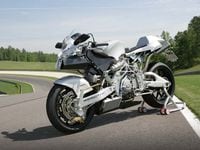

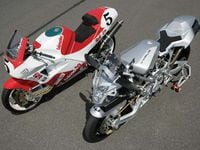
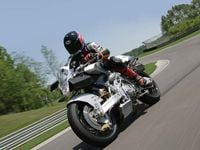
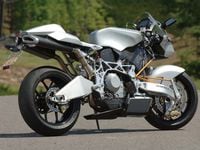
/cloudfront-us-east-1.images.arcpublishing.com/octane/2WF3SCE3NFBQXLDNJM7KMXA45E.jpg)
/cloudfront-us-east-1.images.arcpublishing.com/octane/G4MG6OUCJNBSHIS2MVVOTPX65E.jpg)
/cloudfront-us-east-1.images.arcpublishing.com/octane/IIGGWFOTOJGB7DB6DGBXCCMTDY.jpg)
/cloudfront-us-east-1.images.arcpublishing.com/octane/QSTCM6AVEZA5JJBUXNIQ3DSOF4.jpg)
/cloudfront-us-east-1.images.arcpublishing.com/octane/U4I7G625B5DMLF2DVIJDFZVV6M.jpg)
/cloudfront-us-east-1.images.arcpublishing.com/octane/B6XD6LS6IVCQPIU6HXDJSM3FHY.jpg)
/cloudfront-us-east-1.images.arcpublishing.com/octane/ICL63FEDDRDTTMINYICCEYGMDA.jpg)
/cloudfront-us-east-1.images.arcpublishing.com/octane/FCGZHQXRBZFLBAPC5SDIQLVF4I.jpg)
/cloudfront-us-east-1.images.arcpublishing.com/octane/WNOB6LDOIFFHJKPSVIWDYUGOPM.jpg)

/cloudfront-us-east-1.images.arcpublishing.com/octane/X33NU3E525ECRHXLNUJN2FTRKI.jpg)
/cloudfront-us-east-1.images.arcpublishing.com/octane/6KKT5NNL2JAVBOXMZYS5ZO76YA.jpg)
/cloudfront-us-east-1.images.arcpublishing.com/octane/J5RKG5O455GMPGQRF2OG6LRT7A.jpg)
/cloudfront-us-east-1.images.arcpublishing.com/octane/GX2CIZKQVRH2TATDM26KFG2DAE.jpg)
/cloudfront-us-east-1.images.arcpublishing.com/octane/ZWIDYSAKQZHD5BHREMQILXJCGM.jpg)
/cloudfront-us-east-1.images.arcpublishing.com/octane/CYUHJZCTSJCH3MRAQEIKXK7SCQ.jpg)
/cloudfront-us-east-1.images.arcpublishing.com/octane/LKOFINY56FCXJCANJ5M7ZDQUBY.jpg)
/cloudfront-us-east-1.images.arcpublishing.com/octane/4NBPDACMWJH63JQYJVK3QRBDZI.jpg)
/cloudfront-us-east-1.images.arcpublishing.com/octane/KKHQHRR3FJGX7H2IPU6RALMWG4.jpg)

/cloudfront-us-east-1.images.arcpublishing.com/octane/5IOFS5JAE5FOXMNA23ZRAVVYUU.jpg)
/cloudfront-us-east-1.images.arcpublishing.com/octane/CGXQ3O2VVJF7PGTYR3QICTLDLM.jpg)
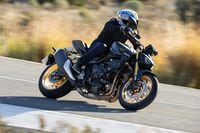
/cloudfront-us-east-1.images.arcpublishing.com/octane/OQVCJOABCFC5NBEF2KIGRCV3XA.jpg)